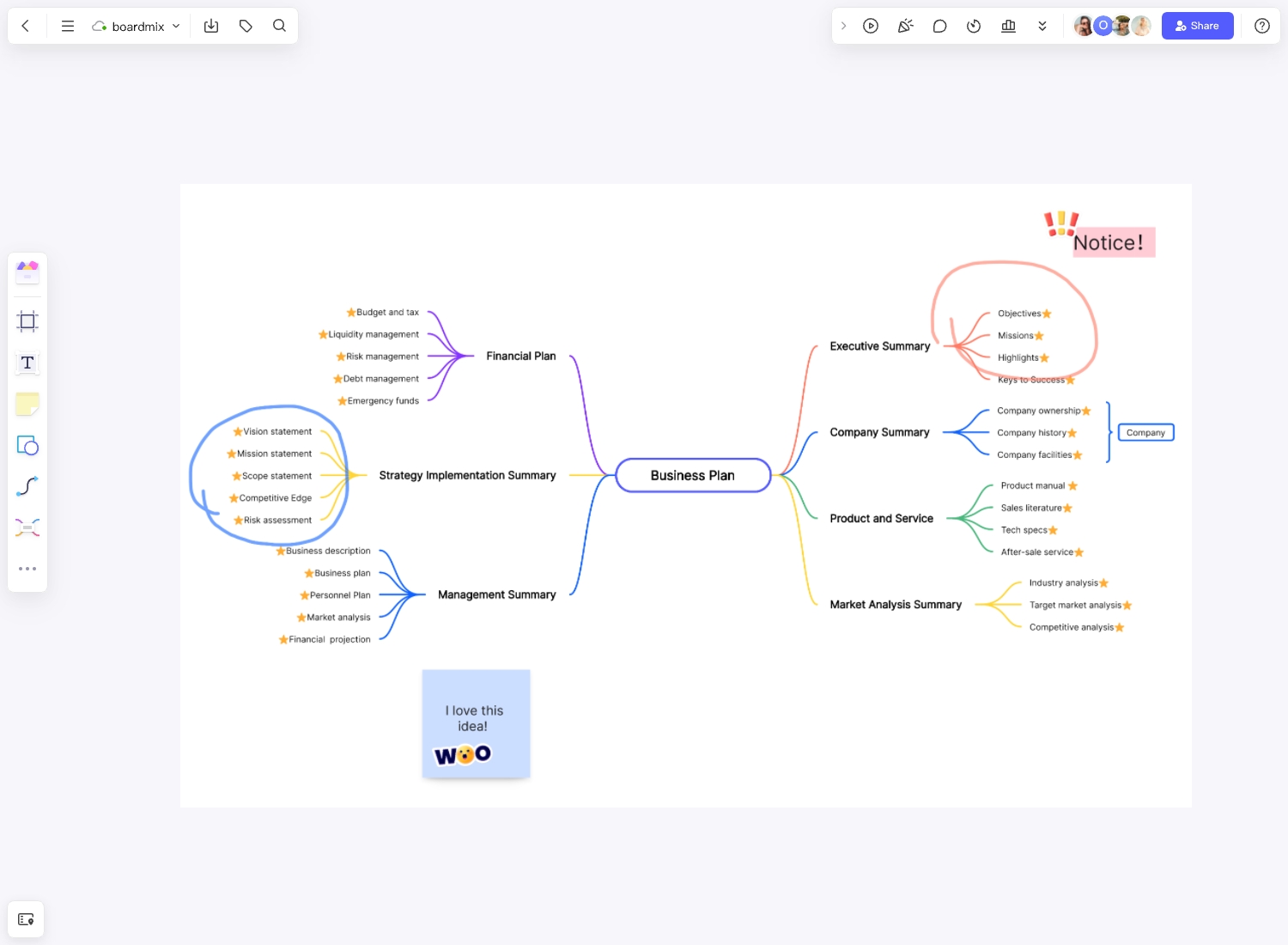About the Mind Map Template
Definition and Explanation
Too many ideas and insights are good for developing an organized structure once you categorize them. However, you need not worry; adapting an easy diagram lets you manage your ideas to create better analysis. A mind map template is a diagramming tool representing concepts and items related to and organized around one central subject. The diagram generally uses a non-linear layout.

History of Mind Maps
Tony Buzan gave the name min mapping to the diagram in 1974. He is a British TV presenter and psychology author who also termed this brainstorming method 'radiant thinking.' For those studying the diagram, it is likely inspired by the same methods utilized by Albert Einstein, Joseph Donald Novak, and Leonardo da Vinci.
Purpose of Mind Maps
A mind map is a flexible tool used in various aspects. A few of the common scenarios where mind mapping is essential include the following:
- Brainstorming
- Problem-solving
- Decision making
- Notes taking
- Presentations
- Project management
- Improved studying
Benefits of Mind Maps
- The diagram presents a better illustration of the relationships between concepts and ideas.
- It promotes efficiency in communicating through processes.
- It provides better visibility to the target audience.
- Mind mapping allows you to organize concepts and ideas effectively.
Types of Mind Map and Their Uses
Let's delve into mind map types and explore their applications.
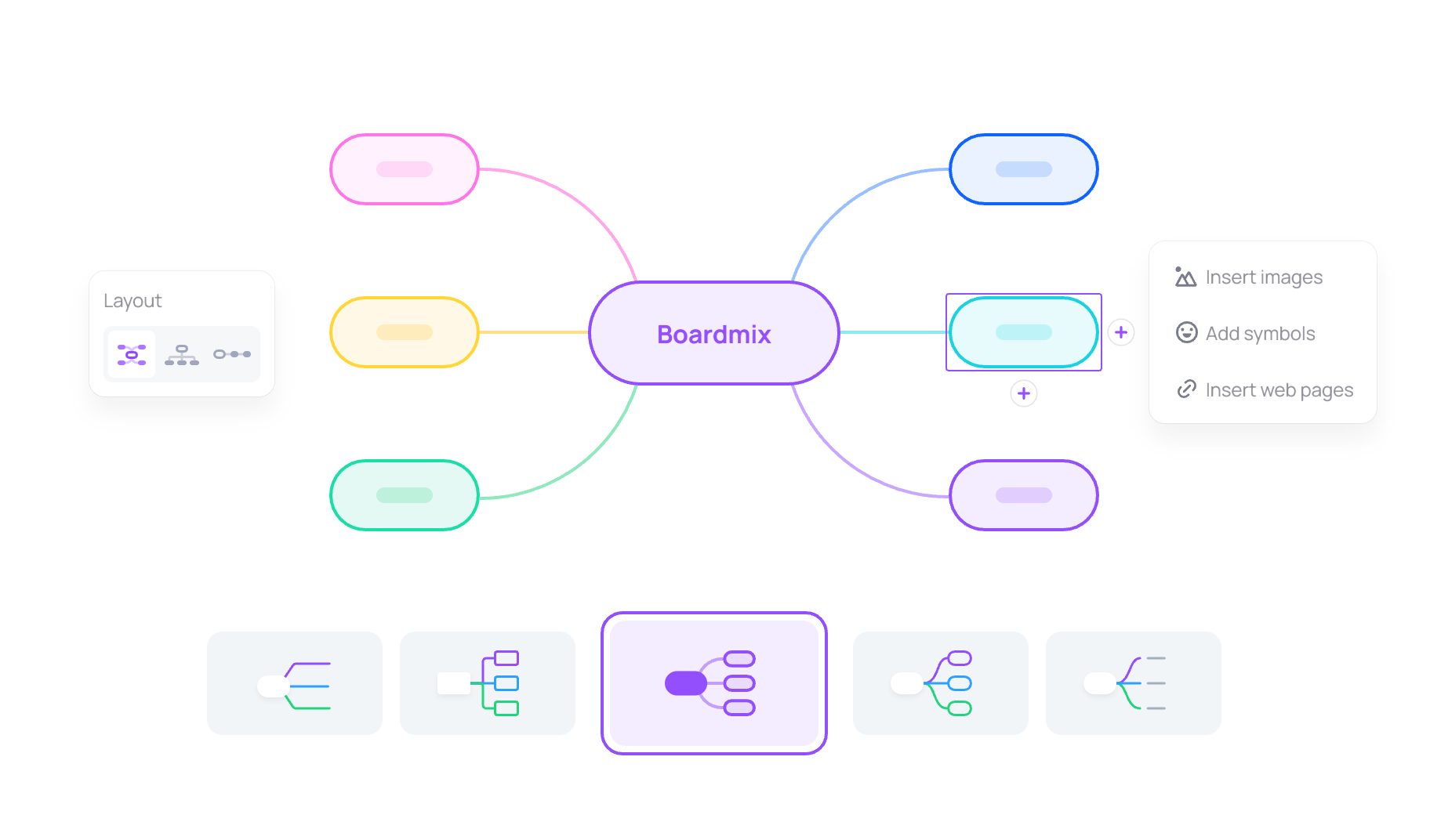
1. Concept Mind Map: This type is typically used when trying to understand a complex concept or idea. It breaks down the concept into smaller, manageable parts, making it easier to grasp the whole picture. For instance, students often use Concept Mind Maps when studying a new topic or preparing for exams.
2. Planning Mind Map: This type is an excellent tool for project management or event planning. It allows you to lay out all tasks and subtasks visually, ensuring nothing slips through the cracks. Businesses often utilize Planning Mind Maps when launching a new product or planning marketing strategies.
3. Problem-Solving Mind Map: As the name suggests, this type is used to tackle problems or challenges. It helps you visualize different solutions and their potential outcomes, facilitating better decision-making. Many organizations use Problem-Solving Mind Maps when dealing with complex issues that require strategic thinking.
4. Presentation Mind Map: This type is perfect for presenting ideas or projects clearly and engagingly. By visually representing information, it helps keep audiences engaged and ensures key points are easily understood. Speakers and educators often use Presentation Mind Maps during lectures or presentations.
Mind Map Templates in Boradmix
Unleashing creativity and organizing thoughts can often feel like a daunting task, but with the right tool, it becomes a breeze. Enter the Mind Map Templates. These ingenious tools serve as a canvas for your ideas, fostering clarity, enhancing memory, and promoting comprehensive thinking. They are not just diagrams, they are your intellectual playgrounds where ideas come to life, connections form, and concepts mature. There are many types of mind maps in Boardmix for you to use, you can create a mind map that suits your work and life.
Business Model Canvas Mind Map
Developed by Alexander Osterwalder and Yves Pigneur, the business model canvas is a tool that provides a visual representation of how a business creates, delivers, and captures value. As is shown in the example below, a business model canvas should include key partners, key activities, customer segments, key resources, cost structure, value propositions, customer relationships, channels, and revenue streams. It is a versatile tool that can be used to describe, design, and analyze business models. It provides a comprehensive view of the various components of a business and their interconnections, enabling entrepreneurs, managers, and stakeholders to understand and communicate the key elements necessary for its success.
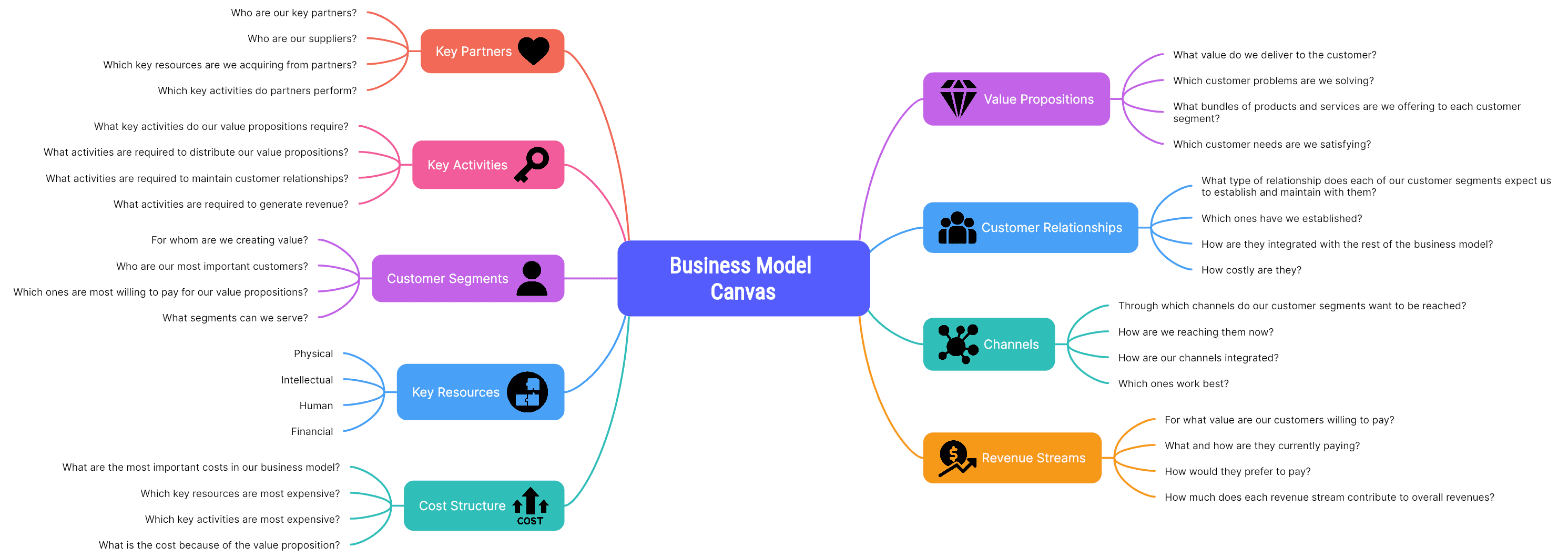
Communication skills mind map
Communication skills are more than just speaking since; generally, communication comprises different kinds. You can assign shapes for the main concepts like written, verbal, and non-verbal communication skills to better illustrate the diagram. Ensure to provide examples for each type so it's easier to understand.

Brainstorming for Research Projects
This brainstorming mind map example should give you an idea of where to start when conducting a research project brainstorming mind map. You can adapt it further based on your specific research topic, methodology, and requirements. The goal is to visually organize your thoughts and ideas, ensuring a comprehensive and well-planned research project.
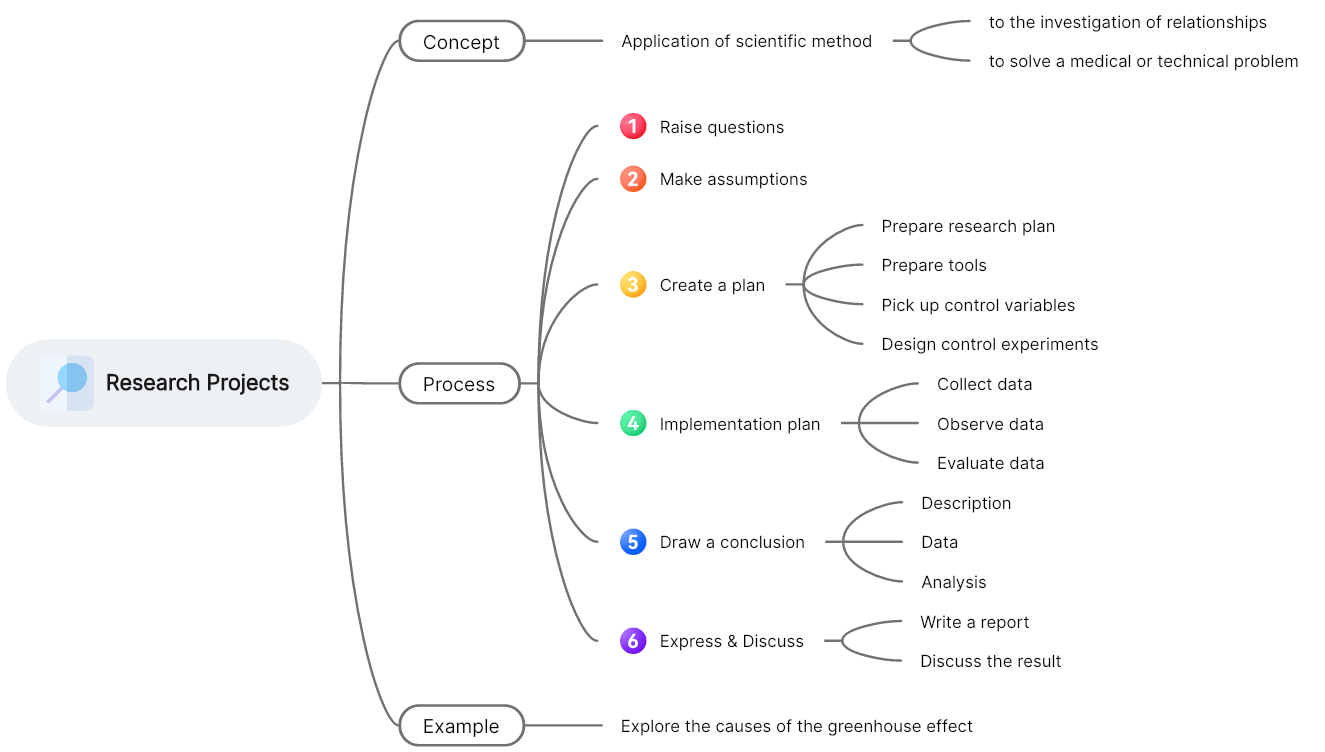
Why a Whiteboard is Better for Mind Mapping
Using a whiteboard for mind mapping offers several advantages that can enhance your brainstorming and planning process.
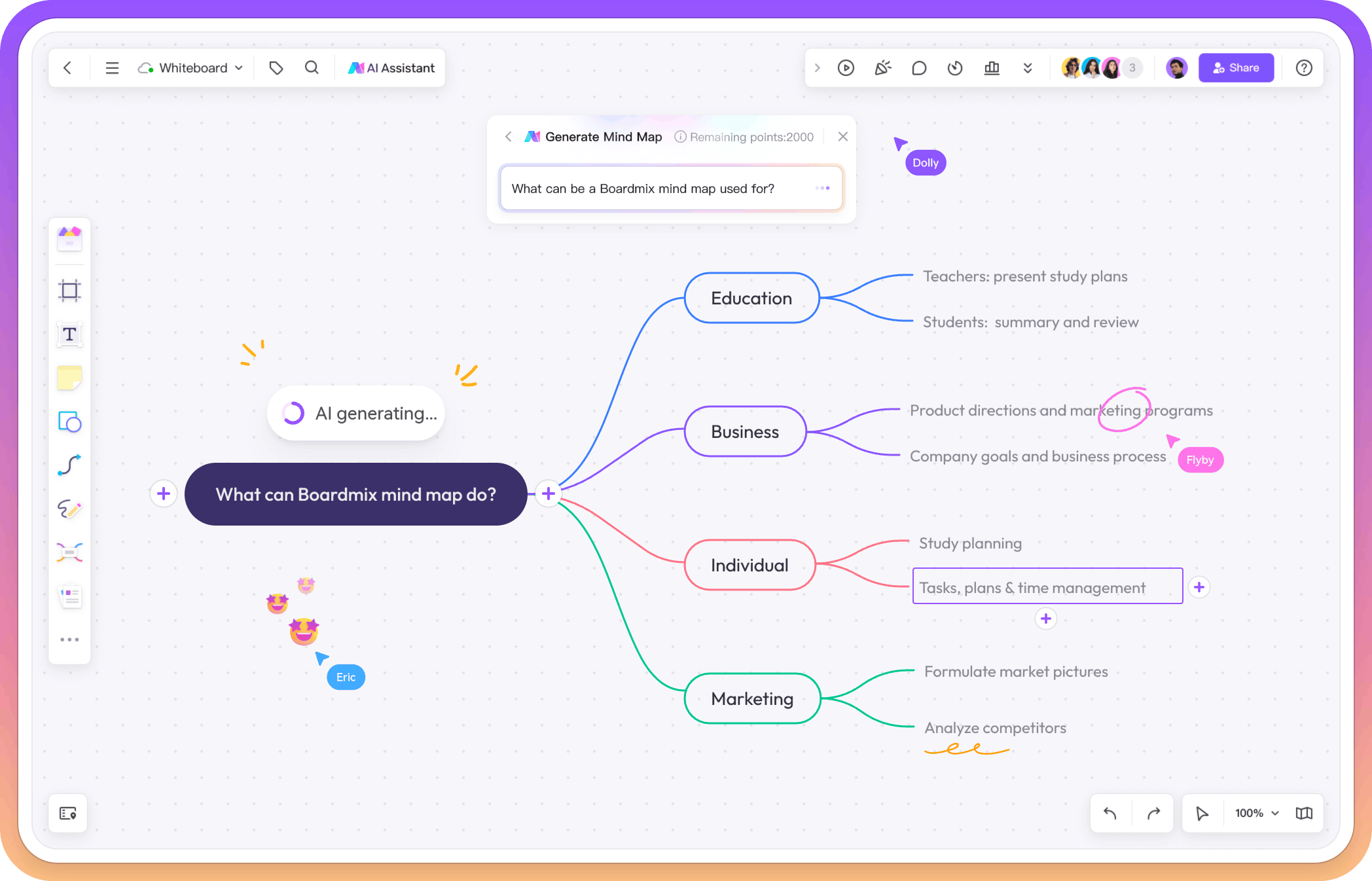
Firstly, a whiteboard provides a large, physical space for mind mapping. This is especially beneficial when dealing with complex ideas or projects as it allows you to lay out all your thoughts visually in one place. You can easily see the big picture and the relationships between different elements, leading to a better understanding and more effective decision-making.
Secondly, a whiteboard encourages collaboration. Multiple people can contribute to the mind map at the same time, making it an excellent tool for team brainstorming sessions. Ideas can be added, removed, or rearranged on the fly, fostering a dynamic and interactive discussion.
Thirdly, the tactile nature of using markers on a whiteboard can stimulate creativity. The act of physically writing or drawing can engage different parts of your brain, potentially leading to new insights and ideas that you might not have discovered otherwise.
Lastly, a whiteboard is reusable. Once you're done with one mind map, you can easily erase it and start over with a new one. This makes it a cost-effective and environmentally friendly tool for mind mapping.
How to Use BoardMix's Mind Map Template
Tools Needed for Creating a Mind Map
An online whiteboard is better for mind mapping. You can start to draw a mind map free with boardmix.
Using BoardMix's Mind Map template is a straightforward process that involves several steps.
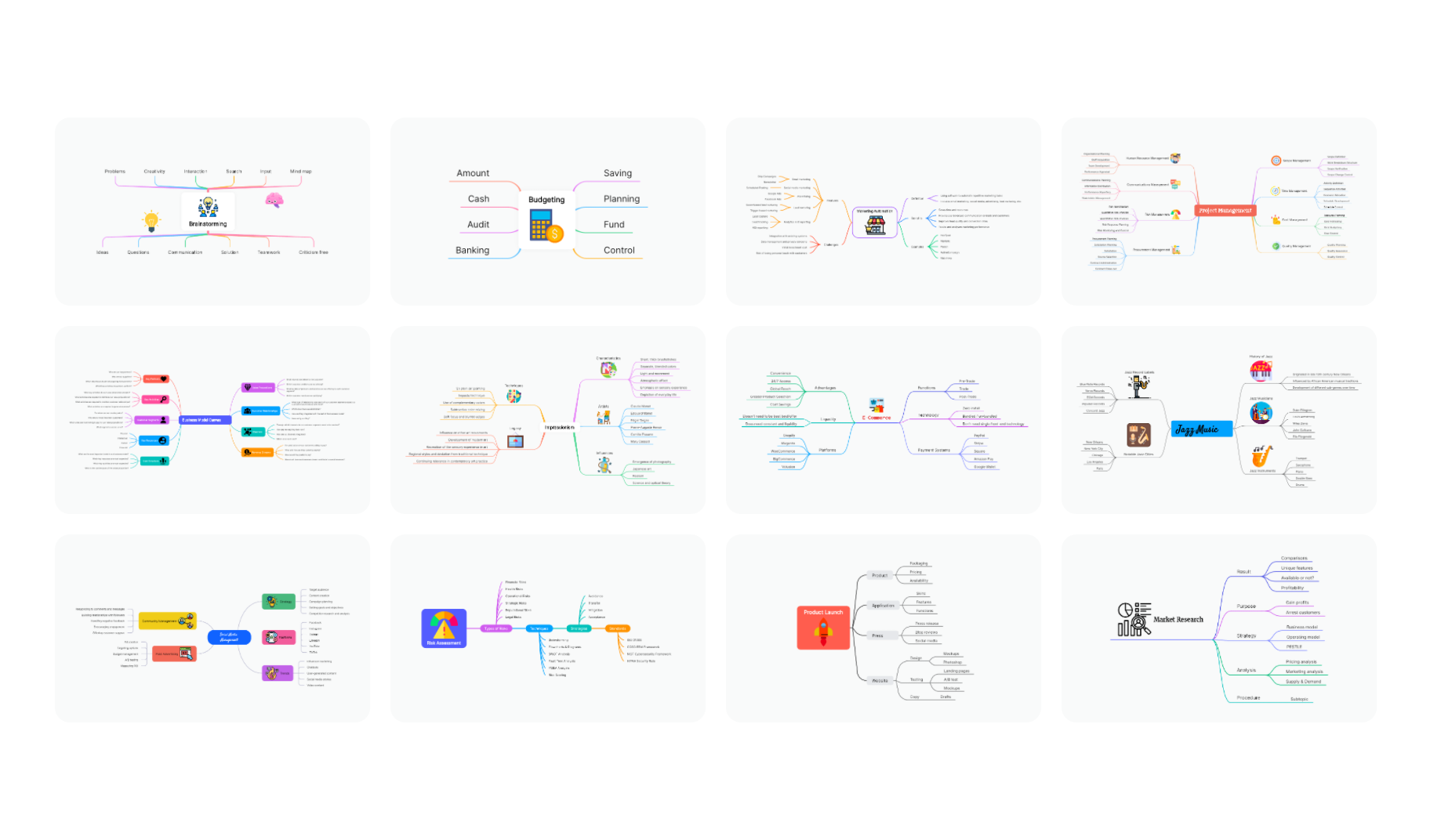
Here's how you can get started:
Access the Template: Firstly, log in to your BoardMix account. If you don't have one, you can easily create it on the BoardMix website. Once logged in, navigate to the "Template" section and search for the "Mind Map" template.
Choose Your Template: You'll find a variety of mind map templates available. Select the one that best fits your needs by clicking on it.
Customize Your Mind Map: Once the template is open, start adding your main idea or topic in the central node. From there, branch out subtopics or related ideas. You can customize each node with different colors, fonts, and shapes to help differentiate and organize your thoughts better.
Collaborate in Real-Time: If you're working as part of a team, invite your colleagues to join the board. They can add their ideas, comment on existing ones, or even vote on them. All changes are visible in real time, making collaboration seamless and efficient.
Integrate With Other Tools: BoardMix allows integration with various other platforms like Google Drive, Slack, and Dropbox. You can import data from these platforms or export your mind map for further use.
Save and Share: Once you've finished creating your mind map, save it for future reference. You can also share it with others via email or a shareable link.
Step-by-Step Guide to Making a Mind Map
- Choosing a Central Idea. Remember to discuss the main subject of the mind map with your team. Once done, you can place the central concept at the center of your map.
- Creating Main Branches. Ensure to brainstorm the possible topics you must input around the central idea—no need to worry about the order of these ideas.
- Adding Subtopics. Provide subtopics for each main topic. This allows you to elaborate more on your ideas and be more specific with your mind map. Remember to use shorter words or phrases.
- Including Keywords and Images. Digital mind-mapping tools allow you to be creative with your diagram. Besides the lines and shapes, they let you add images to your mind map template. Keywords are also useful, especially if you have to place various subtopics on the diagram.
- Organizing and Reviewing the Mind Map. Refine your map, as there might be some topics and subtopics that you must rearrange. Ensure your team agrees with all insights in the mind map template before the final output.
Create Multiple Mind Maps on a Limitless Canvas
An online whiteboard like BoardMix supports the creation of multiple mind maps on a Limitless canvas. This feature is particularly beneficial when dealing with large-scale projects or brainstorming sessions that involve numerous ideas and connections.
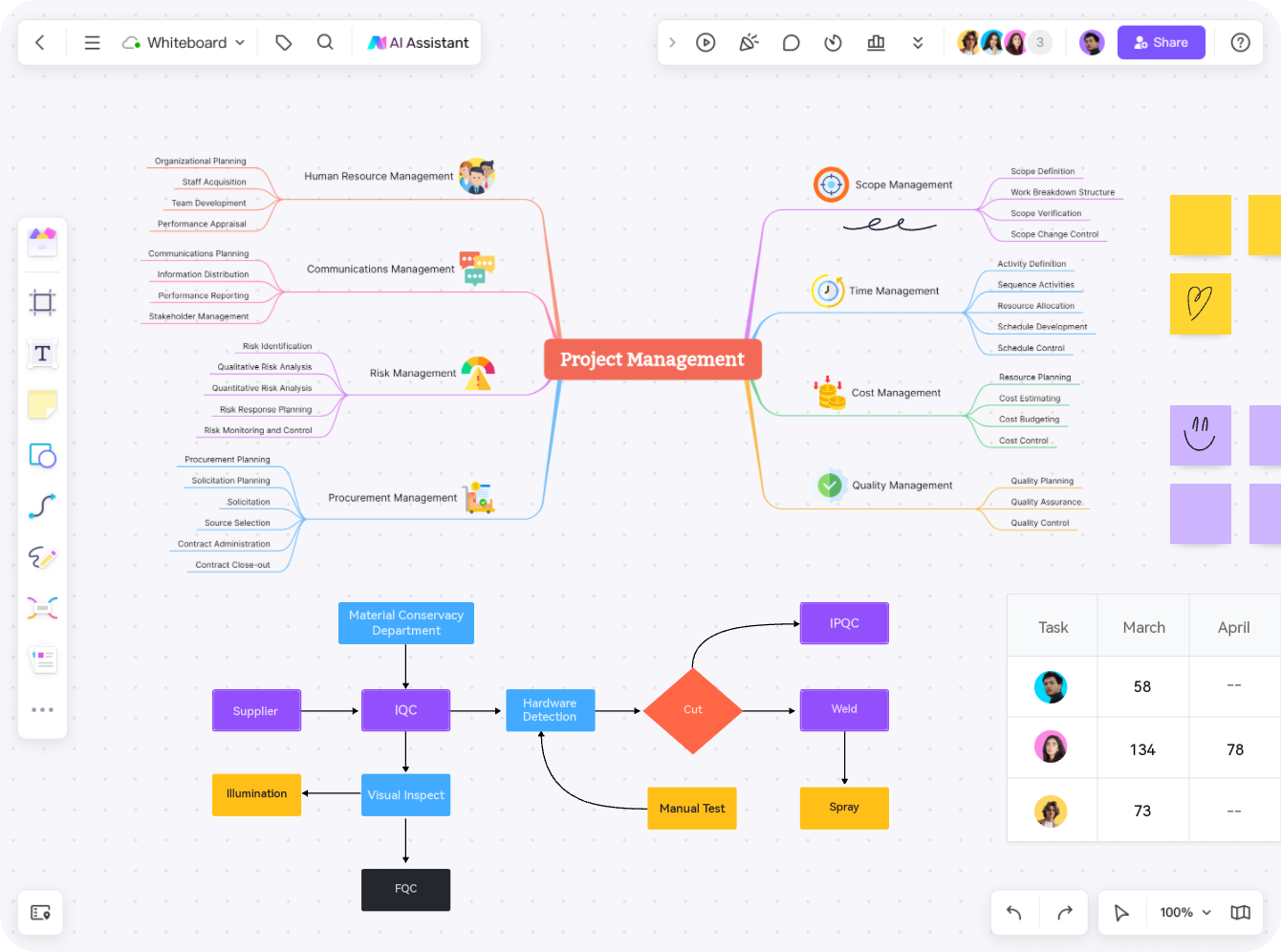
Here's how you can utilize it:
Initiate with a Blank Canvas: Start by opening a new Limitless canvas on your online whiteboard. The vast space allows you to create as many mind maps as required without worrying about running out of room.
Develop Your First Mind Map: Place your central idea or topic in the middle of the canvas and branch out subtopics or related ideas from there. Using different colors, fonts, and shapes for each node can help differentiate and organize your thoughts more effectively.
Create Additional Mind Maps: After completing your first mind map, move to another section of the canvas to start a new one. The beauty of a Limitless canvas lies in its ability to zoom in and out, ensuring each mind map has sufficient space without overlapping others.
Connect Related Mind Maps: If some of your mind maps are interconnected, you can draw lines or arrows between them to illustrate these relationships. This enhances the overall understanding of how your ideas interact with one another.
Who is this Mind Map Template for?
The Mind Map template is designed for a broad range of users.
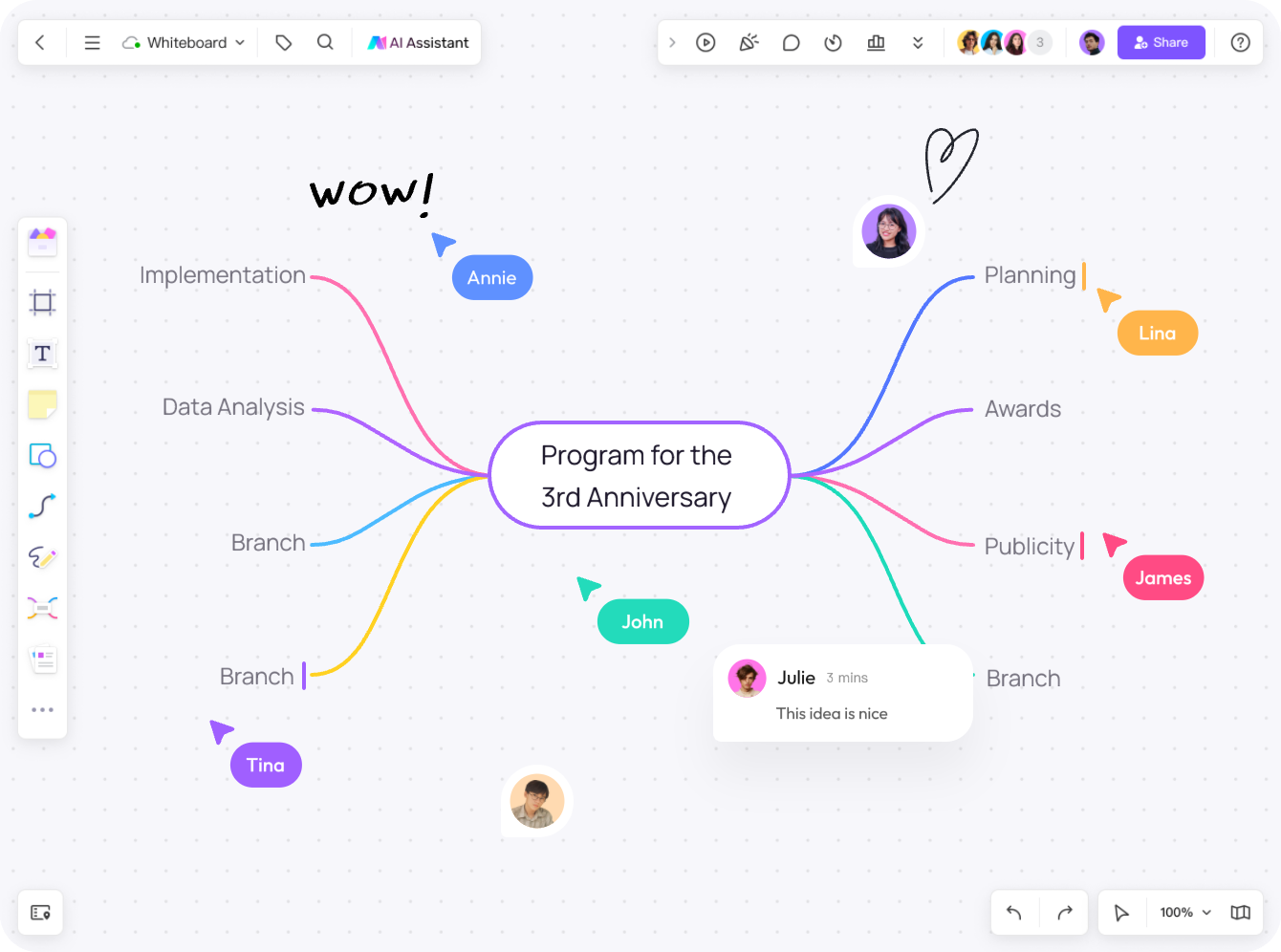
Here are some key groups who might find it particularly useful:
-
Students: Whether they're studying for exams, working on a project, or trying to understand complex topics, students can use the Mind Map template to break down information into manageable chunks and visualize connections between different concepts.
-
Professionals: Professionals across various fields can use this template for project planning, brainstorming sessions, problem-solving, and decision-making processes. It helps to organize thoughts, ideas, and tasks visually and enhances productivity.
-
Educators: Teachers and trainers can use the Mind Map template to present information in an engaging and easily digestible format. It's also a great tool for facilitating group activities in a classroom or training session.
-
Creative Individuals: Writers, designers, artists, or anyone involved in creative pursuits can use mind maps to generate new ideas, plot out stories or projects, and explore different concepts visually.
-
Teams: The Mind Map template is excellent for collaborative work. Teams can use it during brainstorming sessions to generate ideas collectively and visualize the relationship between different tasks or concepts.
FAQs about Mind Maps
What is the difference between a mind map and a concept map?
Generally, a concept map involves several ideas and concepts in one diagram. Meanwhile, mind maps focus on one central idea with subtopics. Looking at its structure, the concept map has a radial framework, while a mind map is a tree-like diagram.
Can mind maps help improve memory?
Yes. A mind map improves your memory as it involves an individual's imagination. The colors, words, branches, and images promote mental focus and energy, allowing you to place concepts into memory.
Is it necessary to use images in a mind map?
Not necessarily. As the examples above show, you can utilize shapes and lines to form the mind map template. However, if you love to have more visuals on your diagram, you can use stickers and images to highlight significant points on the mind map.
Can I make a mind map without any software?
Yes, you can do it manually. However, it could be challenging to collaborate with your team members remotely to edit the diagram when needed. If it's for personal use, it's possible that you can make your mind map without software.
How can I use mind maps in team collaboration?
In most cases, you can provide your team with the link to your mind map project. Once they visit the link, they can see the actual mind map. Mind map software today also allows collaborators to get an edit access card to the template.
Conclusion
The mind map's job is to make brainstorming more organized quickly. If you're teaming up with people while creating the mind map, discuss with them first the elements you want to include in the chart. There might be ideas that are not ideal to be part of the map, so it pays to get more insights from everyone.
As you can see, whether it is for business, studies, or personal goals, you can adapt the concept of a mind map template. Also, the good thing is that there are hundreds of mind-mapping software that you can use to plot the diagram.


